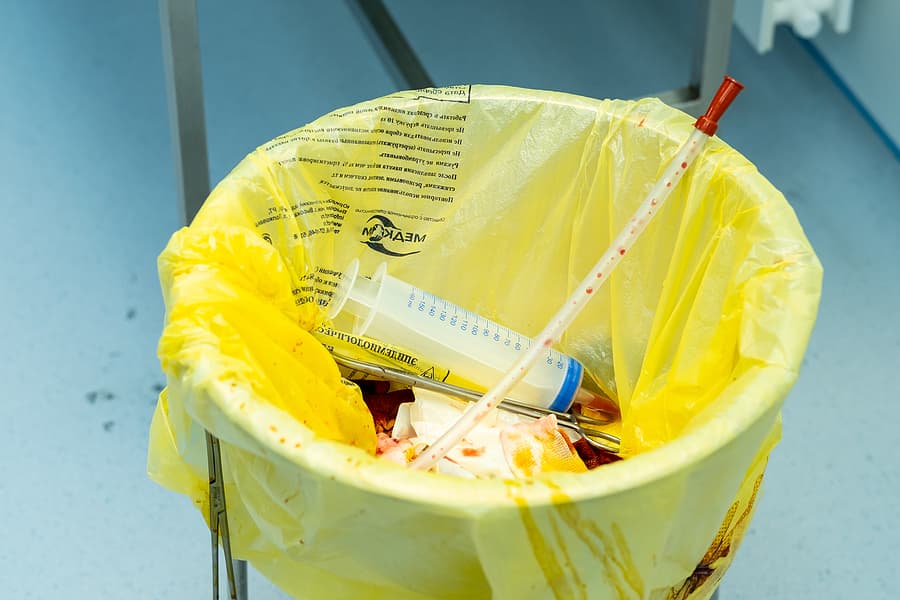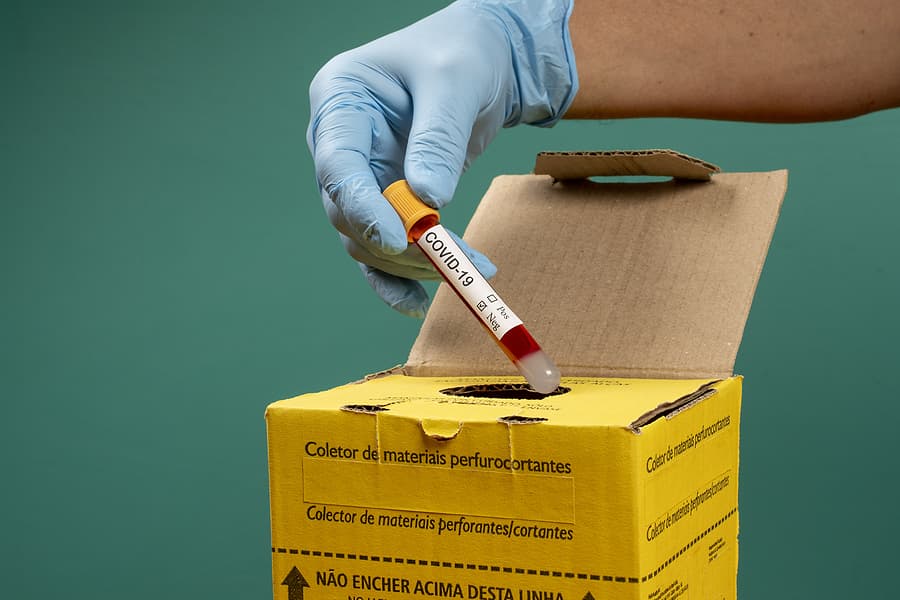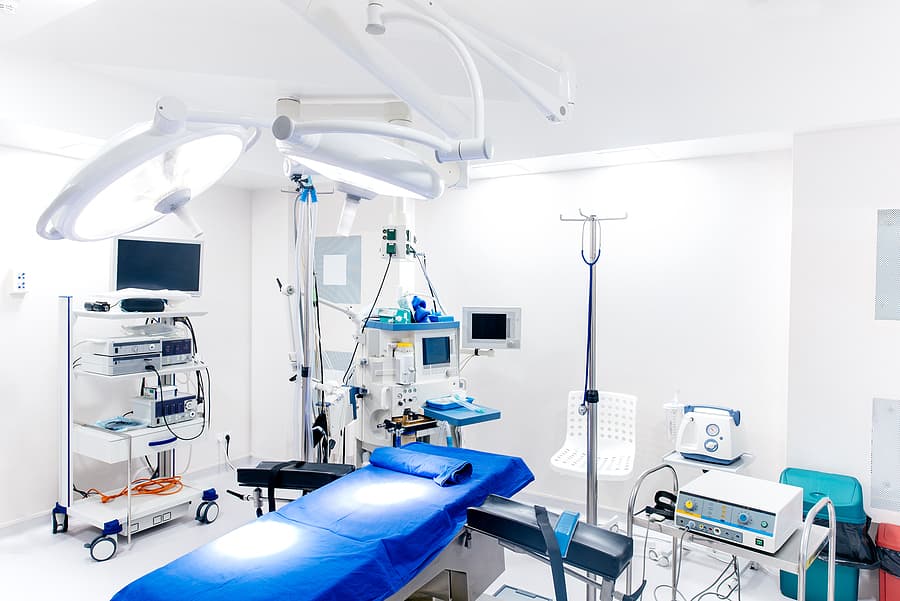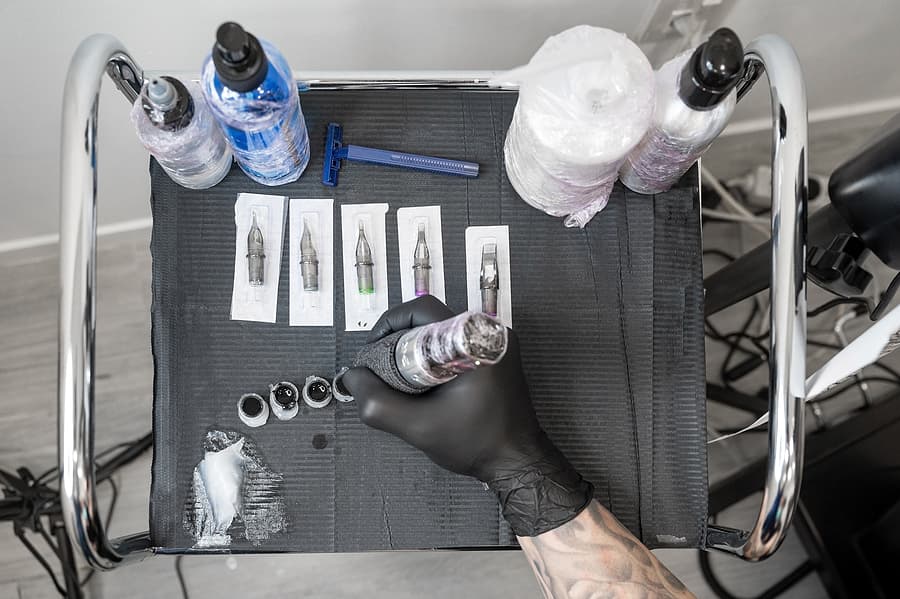
Medical waste refers to any waste generated during medical treatment, diagnosis, or research. Medical waste materials that have been contaminated with blood, bodily fluids, or other potentially infectious materials (OPIMs) are all examples of regulated medical waste.
Exact definitions and terminology for regulated medical waste (RMW) vary by state. Depending on your location, it may be referred to as infectious waste, biomedical waste, or red bag waste. Regulations regarding handling, disposal, and training may also differ. Furthermore, you can find resources for your area through the Healthcare Environmental Resource Center.
RMW is a broad term that covers many types of materials. Understanding some examples of regulated medical waste will help you segregate waste materials properly, saving you money and mitigating risks. Proper management ensures a safe work environment and keeps hazardous materials from ending up in landfills.
Categories and Examples of Regulated Medical Waste
RMW can be broken down into 6 main categories. The categories are based on their potential to spread disease. However, categories may vary by state, but are commonly organized into the groups below.
Animal Waste
Animal carcasses, body parts, or bedding from animals infected with zoonotic disease or intentionally exposed to pathogens during research, in vivo pharmaceutical testing, or biological production.
Common examples:
- Animal organs and tissues
- Animal corpses
- Soiled bedding

Blood, Blood Products, & OPIMs
Bulk waste human blood, human blood components, or products derived from blood (serum, plasma, and other blood components). Any bodily fluid that is visually contaminated with blood or that is difficult to differentiate from blood, would also be included.
Common Examples:
- Blood spill cleanup materials
- Items saturated with blood or OPIMs
- Bodily fluids such as semen, cerebrospinal fluid, synovial fluid, pleural fluid, amniotic fluid, pericardial fluid, saliva, etc.
- Drainage from surgery
Contaminated Sharps
Any medical items that can penetrate the skin, puncture waste bags, or cut through cardboard boxes. Includes devices for humans and animals used in medical care, research, or industrial laboratories.
Common examples:
- Needles and syringes
- Scalpel and razor blades
- Lancets
- Pasteur pipettes
- Capillary tubes
- Blood-contaminated broken glass
- Staples and wires (cardio-catheter wires)
- Dental carpules containing blood
Isolation Waste
Waste from patients infected with highly communicable diseases. Includes biological waste and discarded materials contaminated with blood, excretion, exudates, or secretion from isolated humans or animals.
Common examples:

- Gowns, gloves, and masks
- Soiled bedding
- Bandages
Microbiological Waste
Waste originating from clinical or research laboratory procedures involving communicable infectious agents. Includes cultures and stocks of infectious agents and associated microorganisms and biologicals.
Common examples:
- Culture plates and dishes
- Live and attenuated vaccines
- Cultures and stocks
- Specimens
- Tubes and bottles
- Petri dishes
- Flasks
Pathological & Anatomical Waste
Tissues, organs, or body parts removed by trauma, surgery, autopsy, studies, or another procedure. Pathological waste refers to small tissue samples to be examined in a lab. Anatomical waste refers to recognizable human organs and body parts. Some states may not include hair, teeth, and nails.

Common examples:
- Organs and tissues
- Surgical specimens
- Body material derived from biopsy
Who Generates Regulated Medical Waste?
RMW is generated by a variety of sources including healthcare facilities, research laboratories, and various businesses. Safe medical waste disposal practices should be implemented in all settings to maintain compliance and safety.
Healthcare Facilities
Hospitals, surgery centers, clinics, physician’s offices, dental practices, and veterinarians treat medical conditions and perform procedures that generate RMW.
Research & Collection

Blood banks, cryobanks, clinical laboratories, and research facilities handle human and animal specimens, organic materials and tissues, and blood. They generate waste throughout collection, processing, and handling.
Businesses
Businesses like tattoo studios, medical spas, acupuncturists, funeral homes, and assisted living facilities generate RMW with the services they offer. They are subject to the same regulations as healthcare facilities for the handling and disposal of RMW.
Though RMW accounts for less than 8% of healthcare waste production, it can total more than 40% of your waste management budget. Correctly identifying what is and is not RMW will reduce your costs. Safe handling, containment, storage, and disposal will prevent the spread of disease and prevent fines and litigation for improper disposal of RMW.
Find Regulated Medical Waste Disposal Services with Medical Waste Pros
Regulated medical waste requires specific disposal methods to comply with federal and state regulations. Medical Waste Pros will connect you with reliable waste removal providers in your area. Our partners are knowledgeable in the proper handling and disposal of RMW for your protection. Give us a call at (888) 755-6370 or fill out the form to receive free quotes on medical waste disposal services near you.







